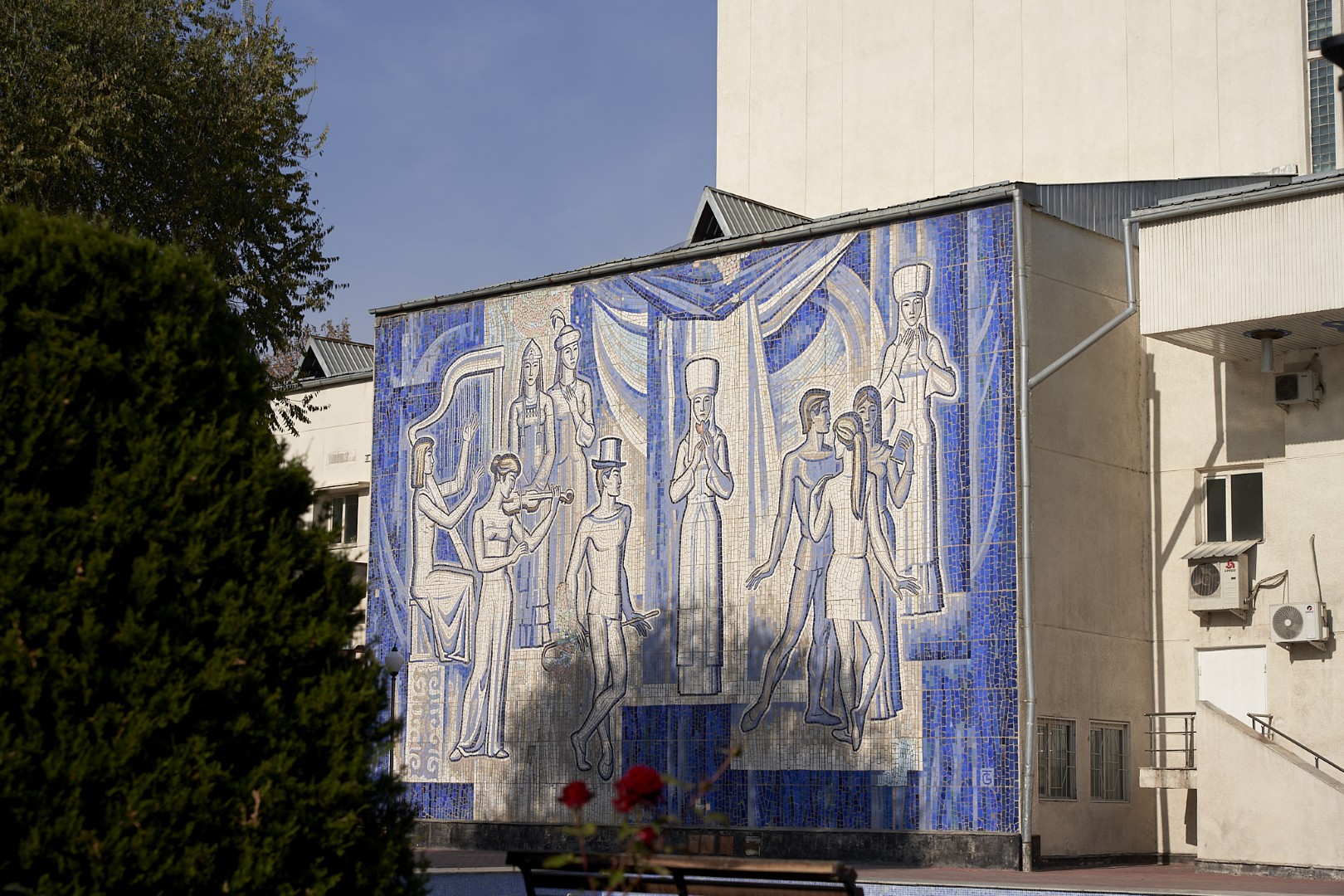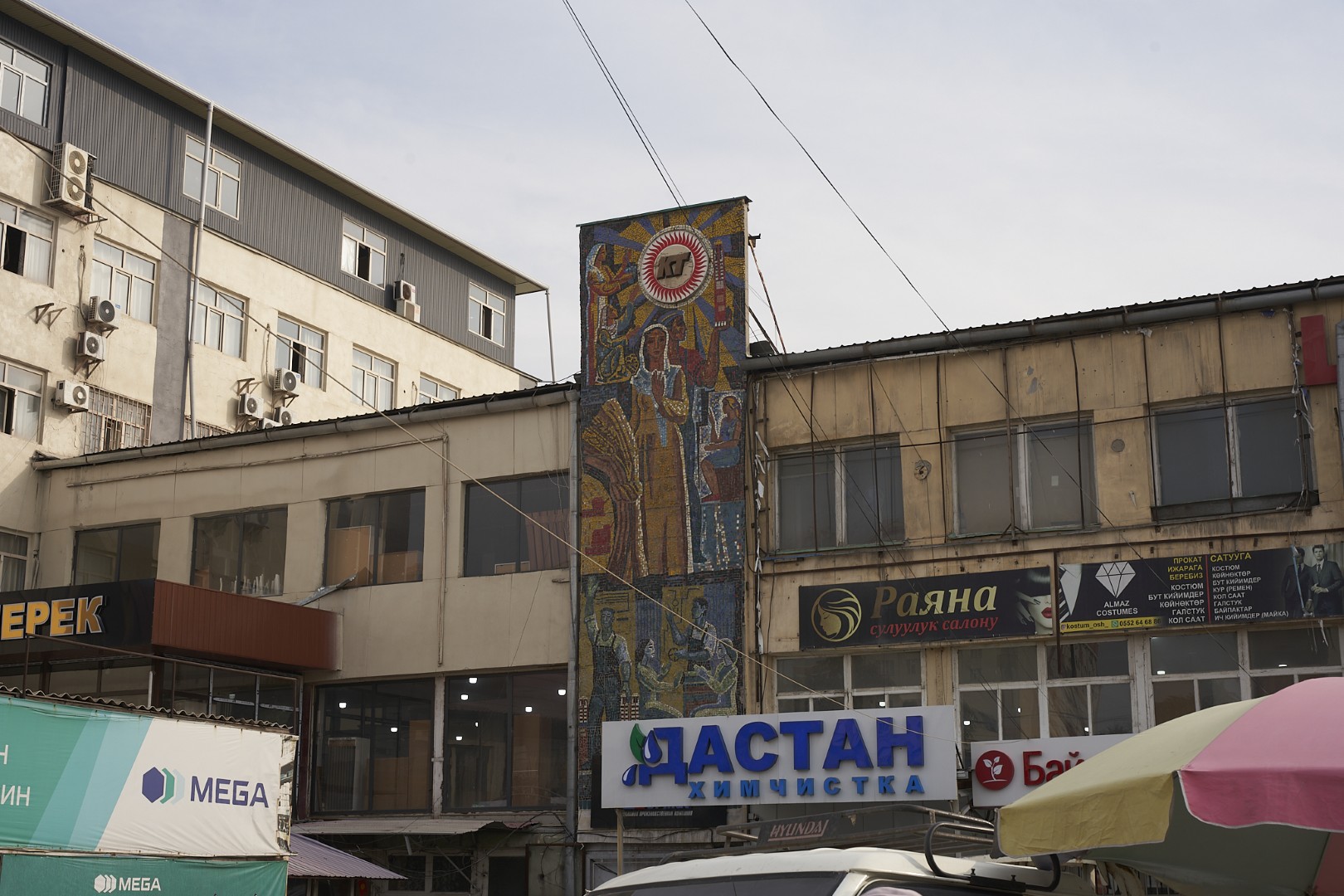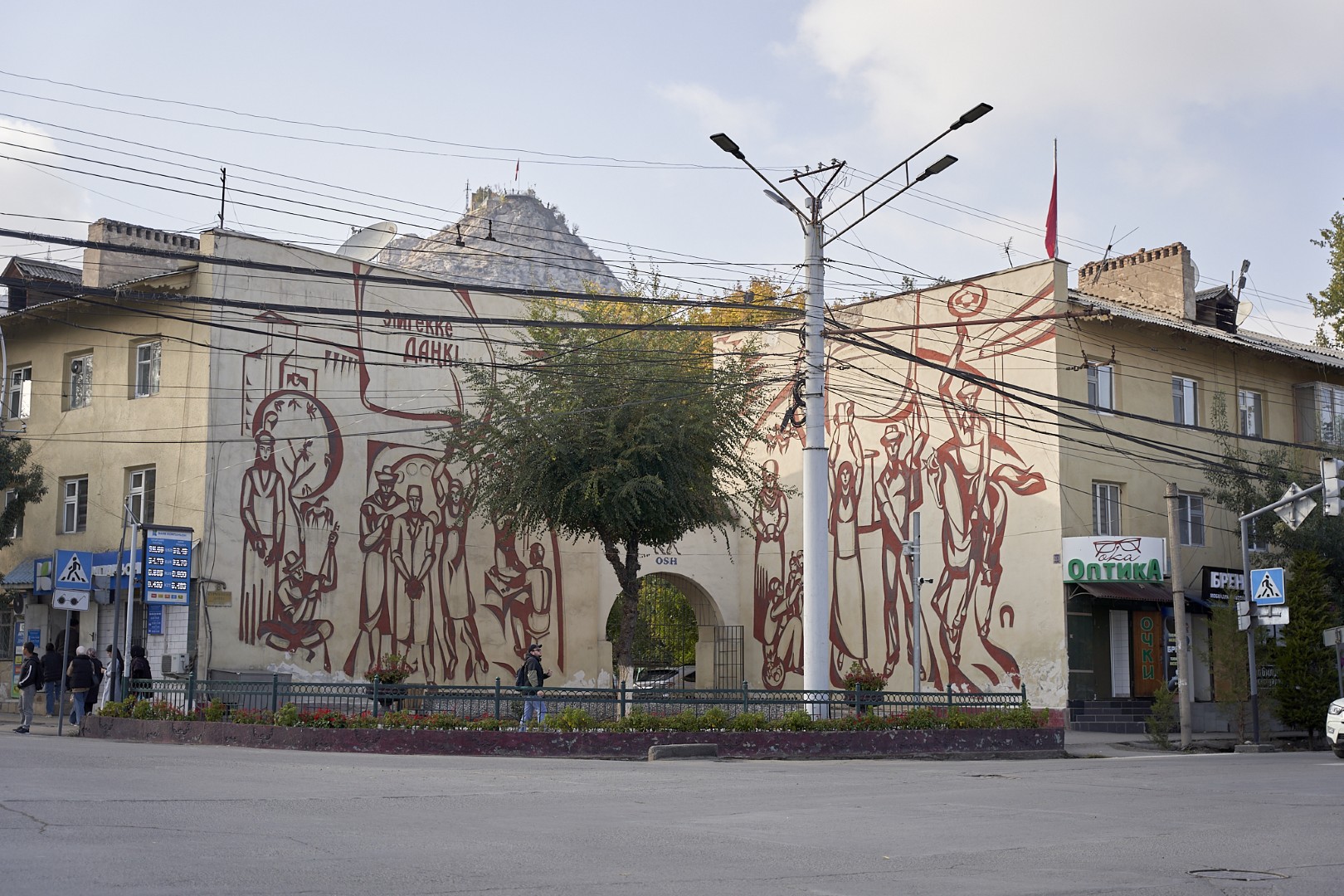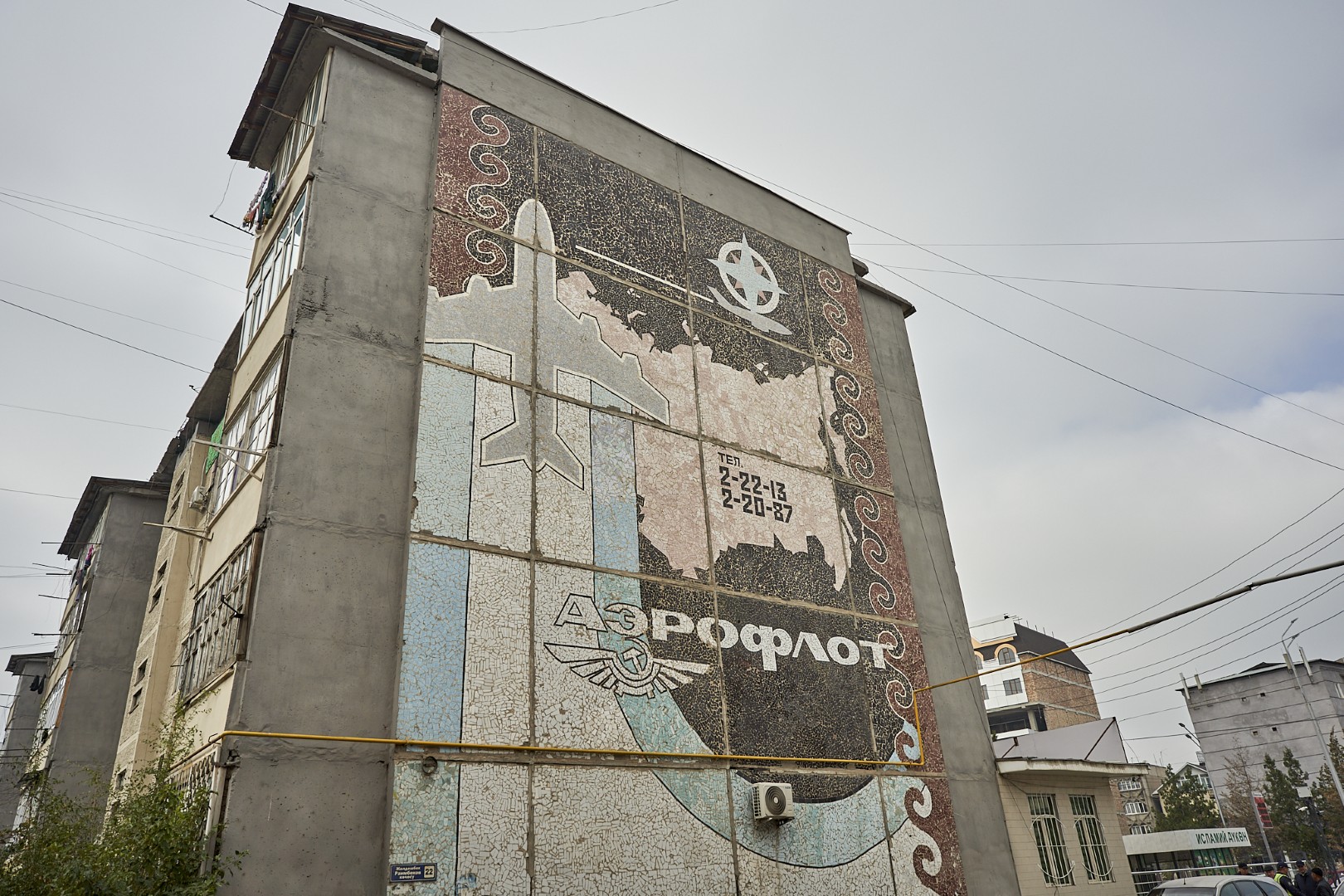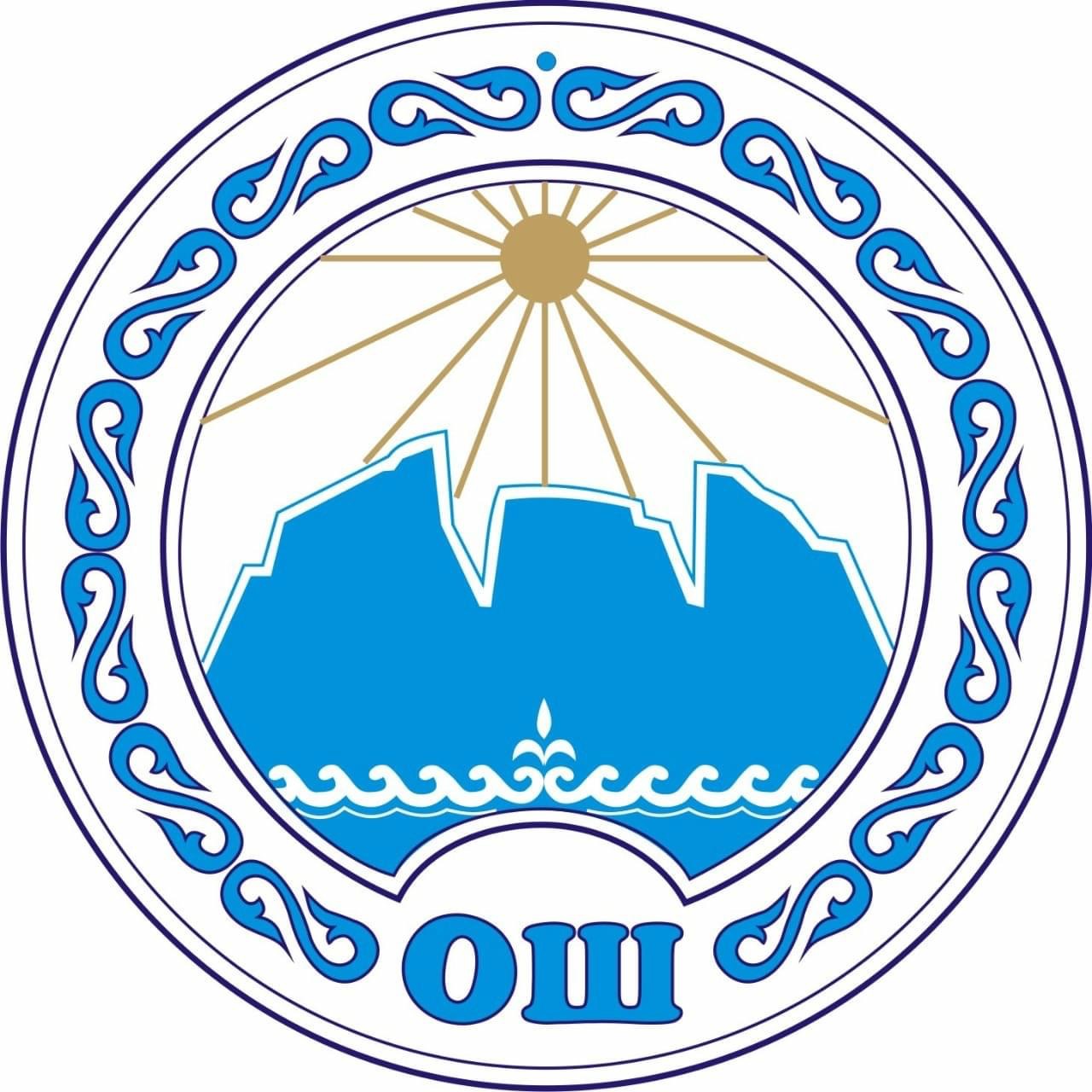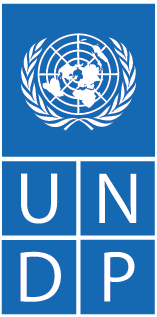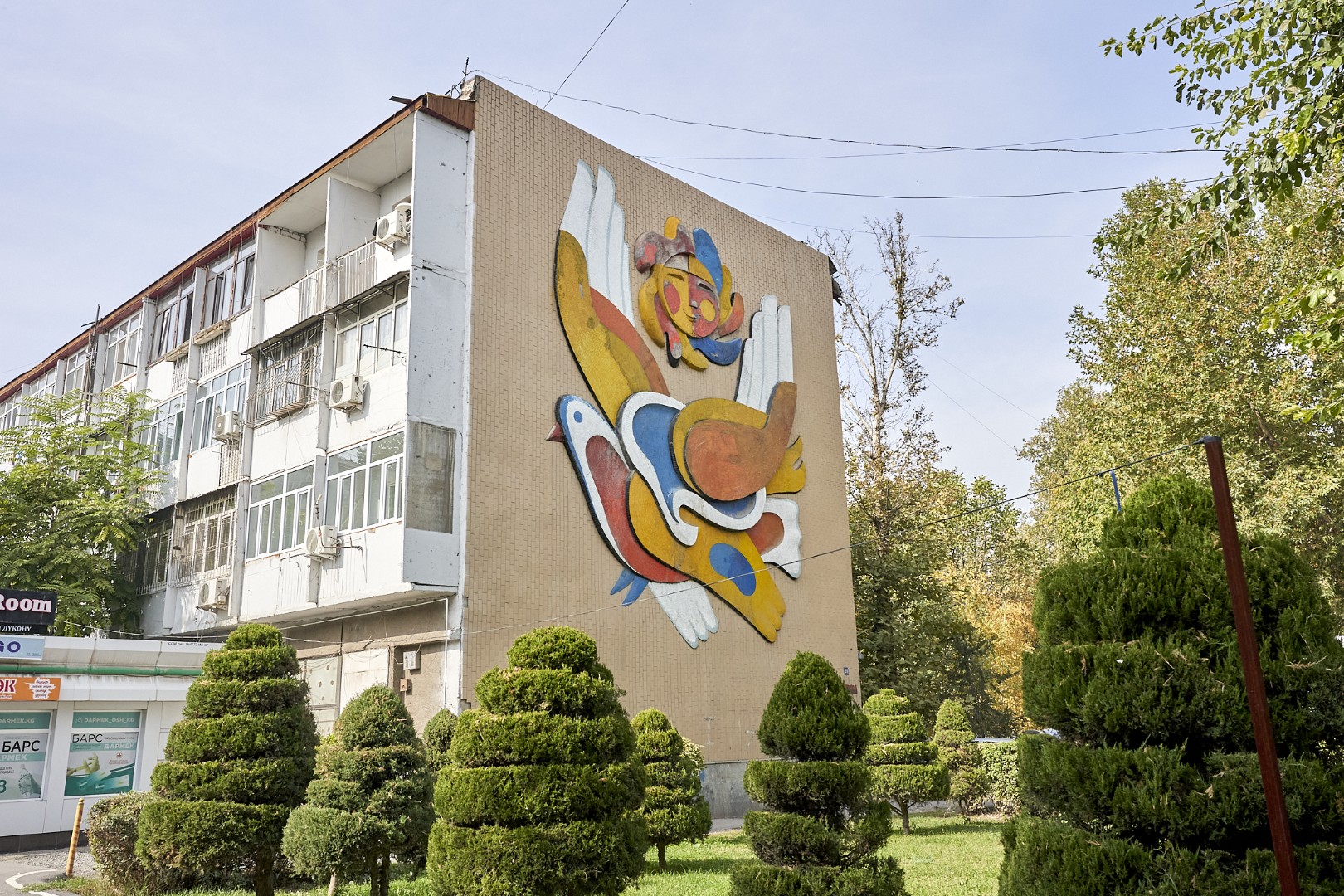
Mosaics as symbols of the era
Monumental mosaics, still preserved on some buildings in Osh, are an instantly-recognizable hallmark of the Soviet period in the history of the city. The first mosaic panels, imbued with the spirit of that time, appeared in Osh in the 1960s and 1970s, during the general reconstruction of the city. They varied in subject matter and complexity, as well as material. Some panels were made of expensive materials such as smalt, ceramic, marble and granite.
The history of Soviet architectural mosaics began in 1954, when Nikita Khrushchev called on Soviet builders to abandon sculptural decorations on building exteriors and replace them with mosaics. Therefore, the heyday of the Soviet mosaic was at its height in the 1960s and 1970s.
Of all the mosaics of Soviet Osh, the panels on the wall of the Sultan Ibraimov National Drama Theater are the most renowned. In 1974, Theodor Herzen, People’s Artist of the Kyrgyz Republic, led a large creative group made up of famous artists, designers and sculptors who worked together on the decoration of the theater. For this they designed and installed smalt mosaics, stained glass windows and wood carvings.
The most unique panels are the mosaic compositions “Theater” and “Artistic Youth,” which are dominated by bright blue, golden and white colors. All the characters and elements on the panel vividly illustrate a rich theatrical life, highlighting unique genres of this art.
The large-scale panels on the walls of the Osh Construction College, the former Osh Pumping Plant, the entrance to the city from Nariman village, and the Osh Sewing Factory are also striking examples of Soviet monumental art and vivid socialist realism.
A special mention must be made of the panels that functioned as Soviet-style advertising! The most iconic of these promotes the Aeroflot ticket office across the wall of a five-storey building. It is located just beside another house, decorated with the well-loved image of the 1980 Olympic mascot, Misha the teddy bear.
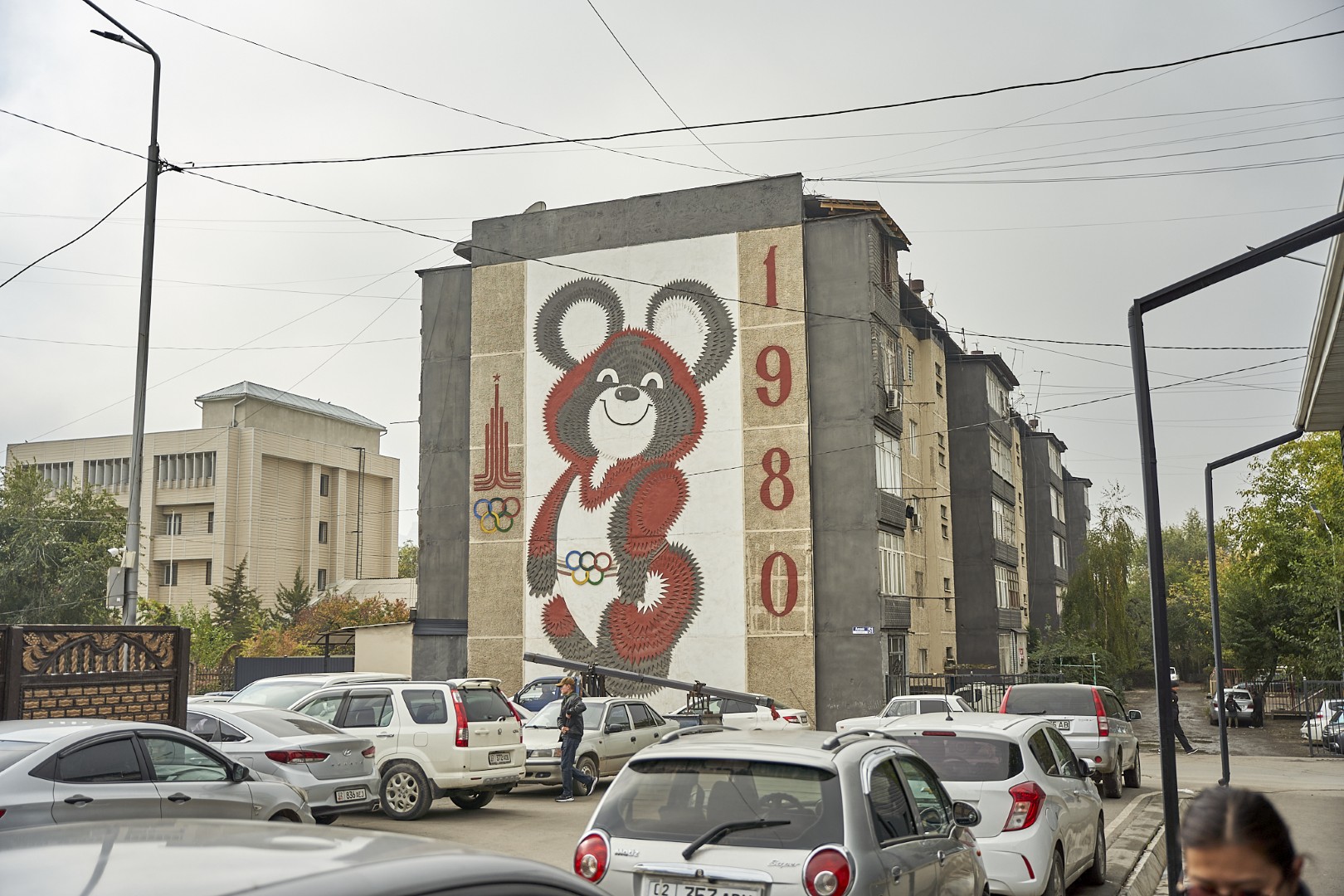

Other Experiences
-
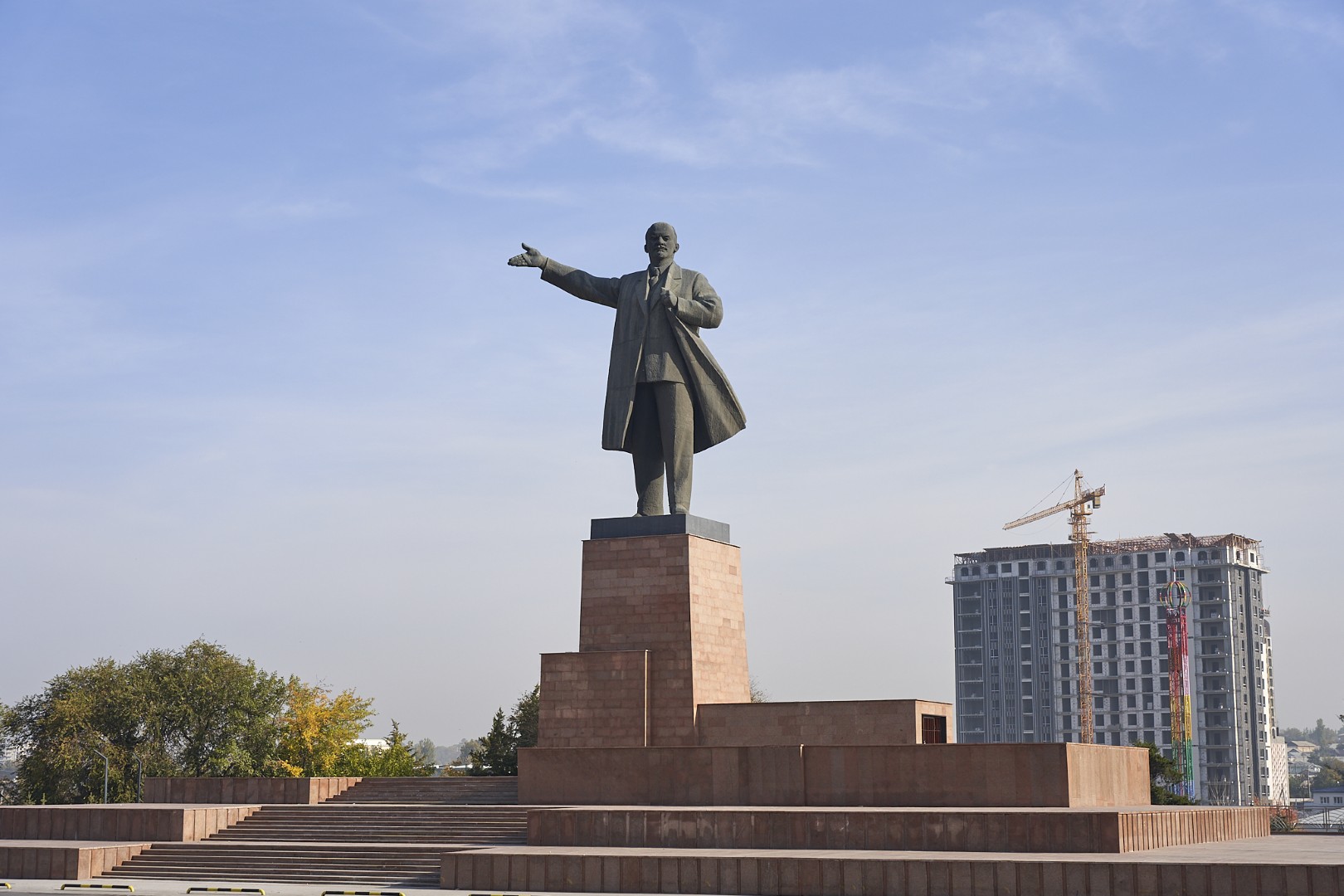
Monuments as symbols of changing eras
An imposing monument to Communist leader Vladimir Lenin, erected in May 1985, still stands in Osh’s central square. The statue itself is 11 metres high…
-

Bridges and Ak-Buura
Osh is a city of countless small bridges. Walking around the city, we often do not notice that we are crossing them, and that below…
-
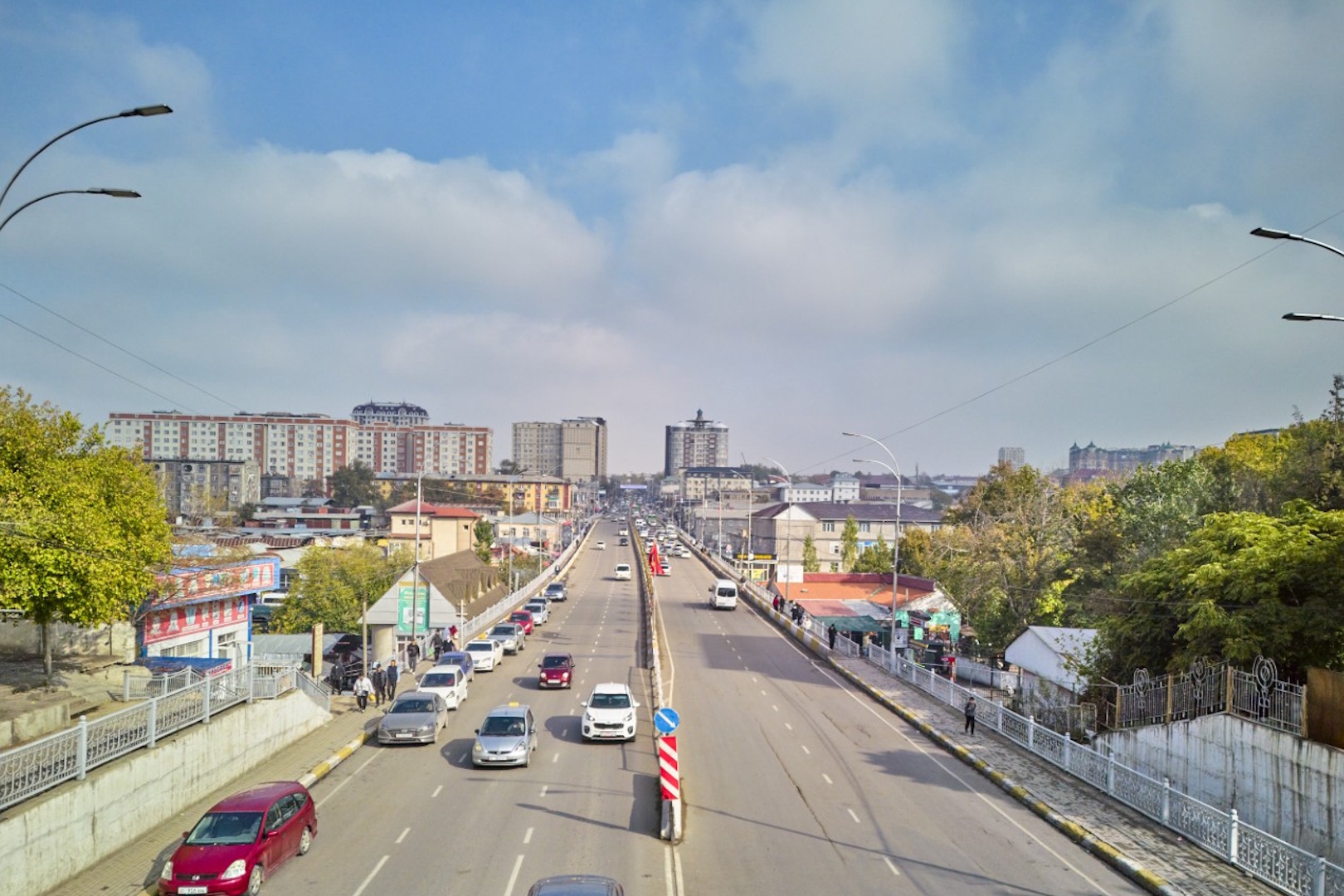
The road to the Pamirs starts in Osh!
The Pamir Highway begins in Osh! The Pamir Highway, one of the highest mountain routes in the world, is an extraordinary landmark and starts right…
-
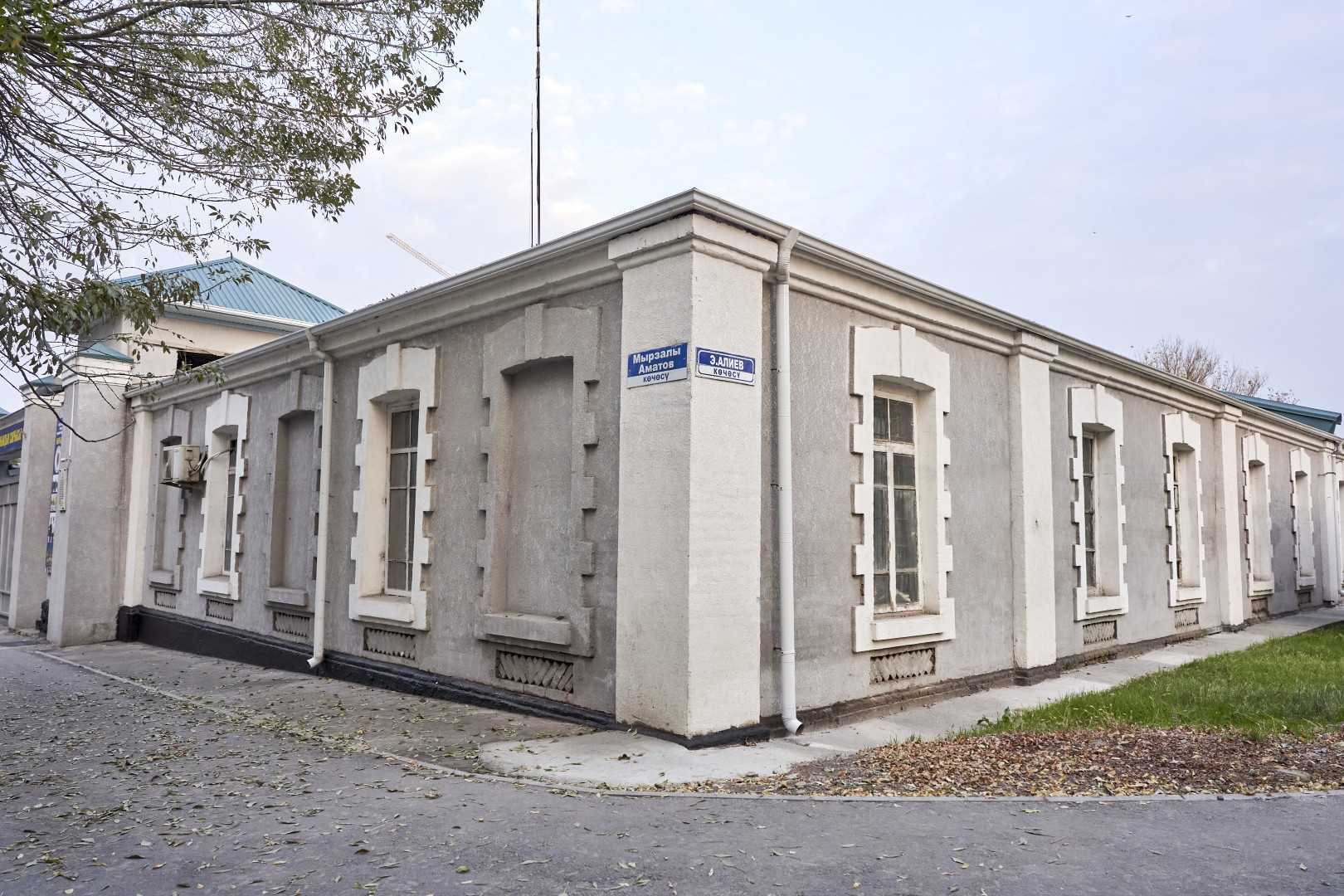
Osh Fortress
The Osh fortress was built in 1919 on the site of the former Tsarist Russian military barracks, located in the very center of the “new…
Other Locations
-
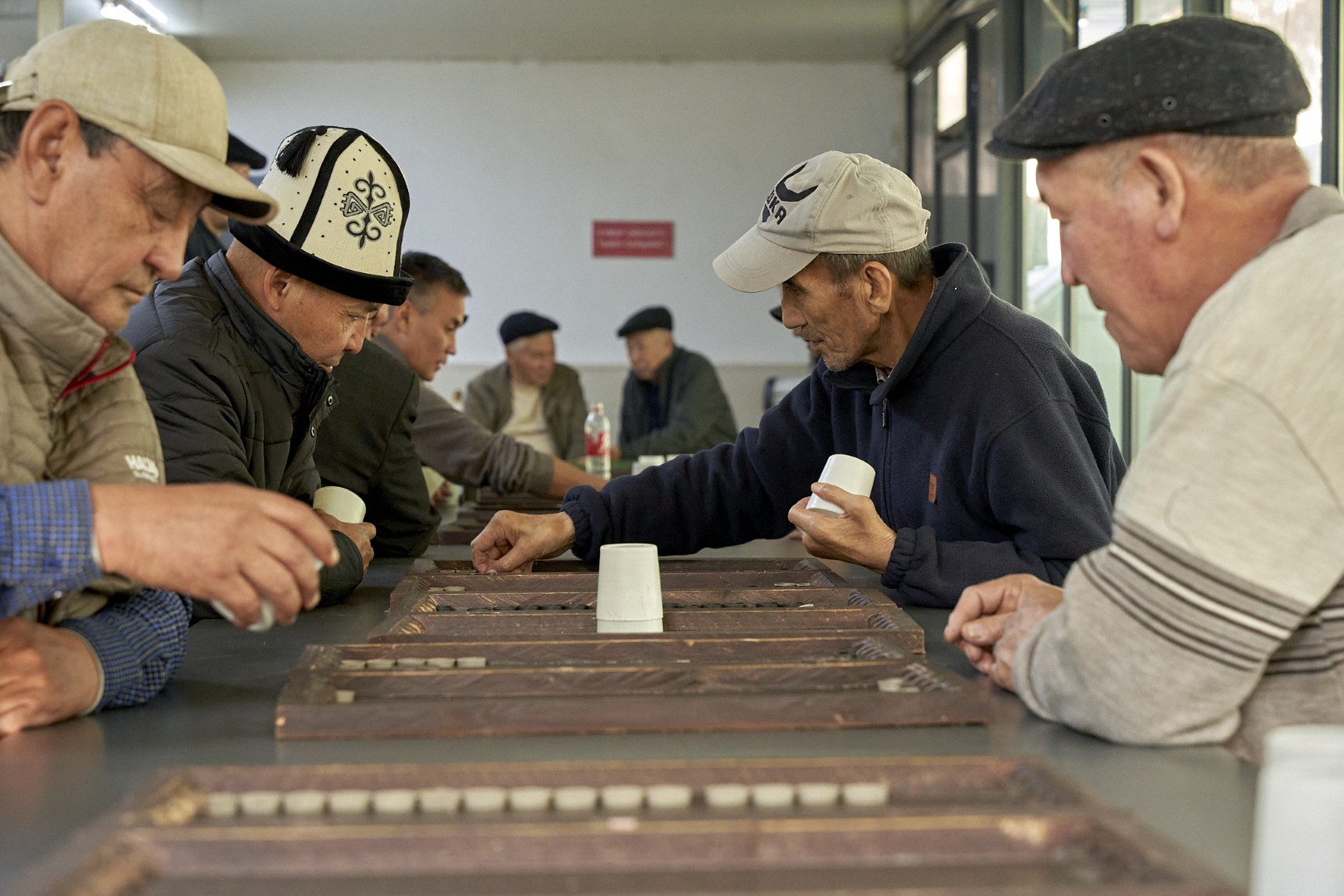
Diversity
Start your leisurely stroll through the old bazaar with a piala, the traditional teacup, of fragrant green tea. Stop by one of the local teahouses…
-
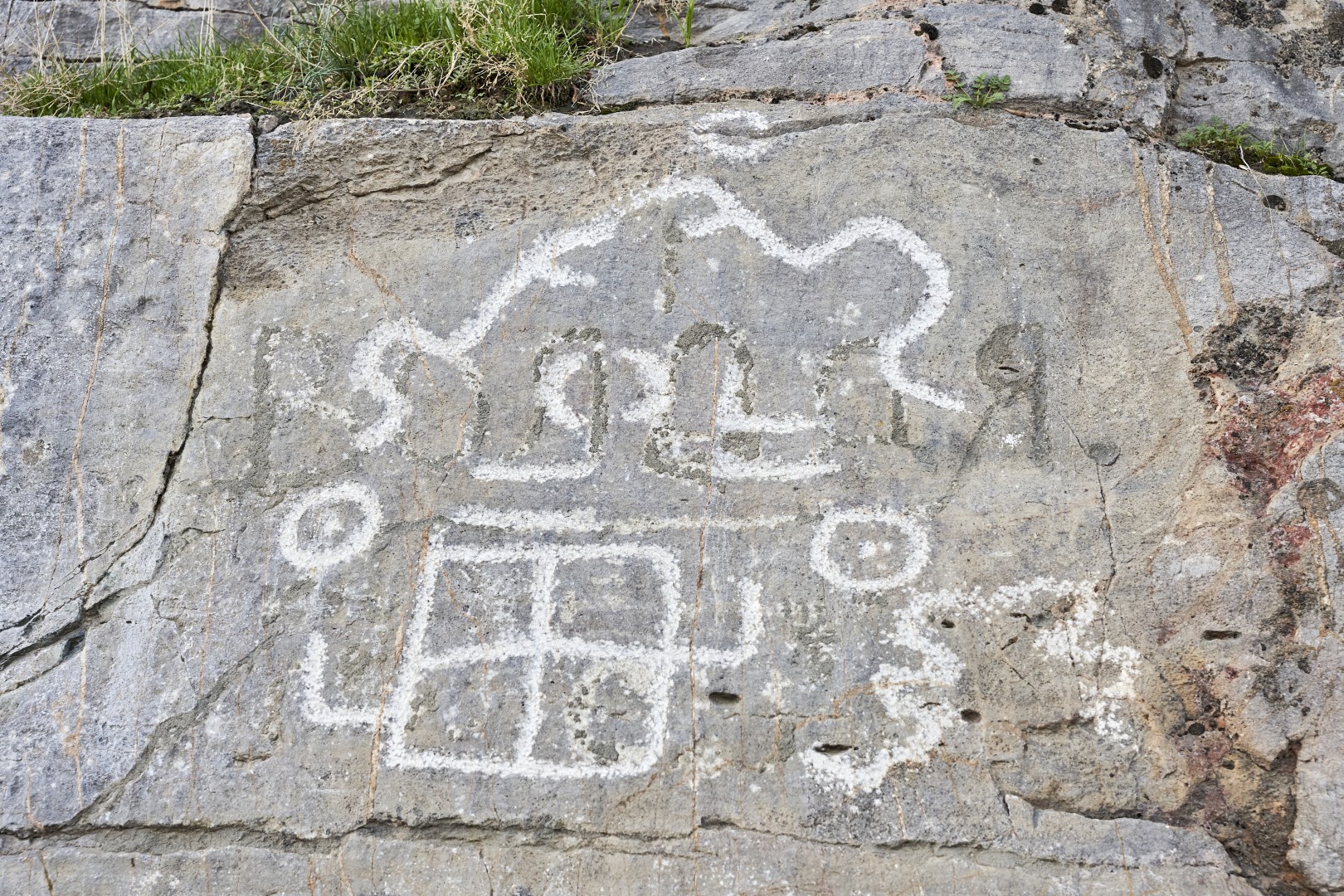
Rock Carvings
Petroglyphs, visual remnants of Osh’s millennia-old history, can be found almost everywhere on Suleiman Mountain. They are most numerous on the southern, eastern, southeastern and…
-

National Drama Theatre
The Osh National Drama Theatre named after Sultan Ibraimov is one of the largest and most famous theatres in Kyrgyzstan. The theatre company was established…
-

Gate of Fire at Suleiman Mountain
Ancient Osh with its majestic Suleiman Mountain has a magic power, attracting adherents of various religions and beliefs, serving as a place of pilgrimage for…
